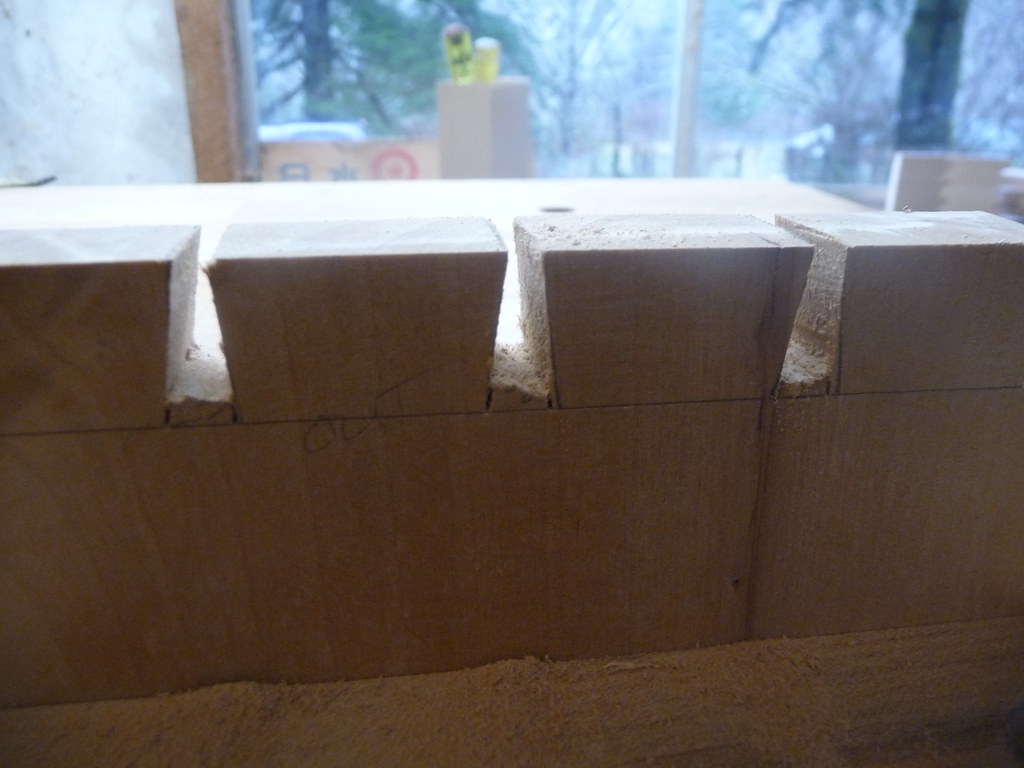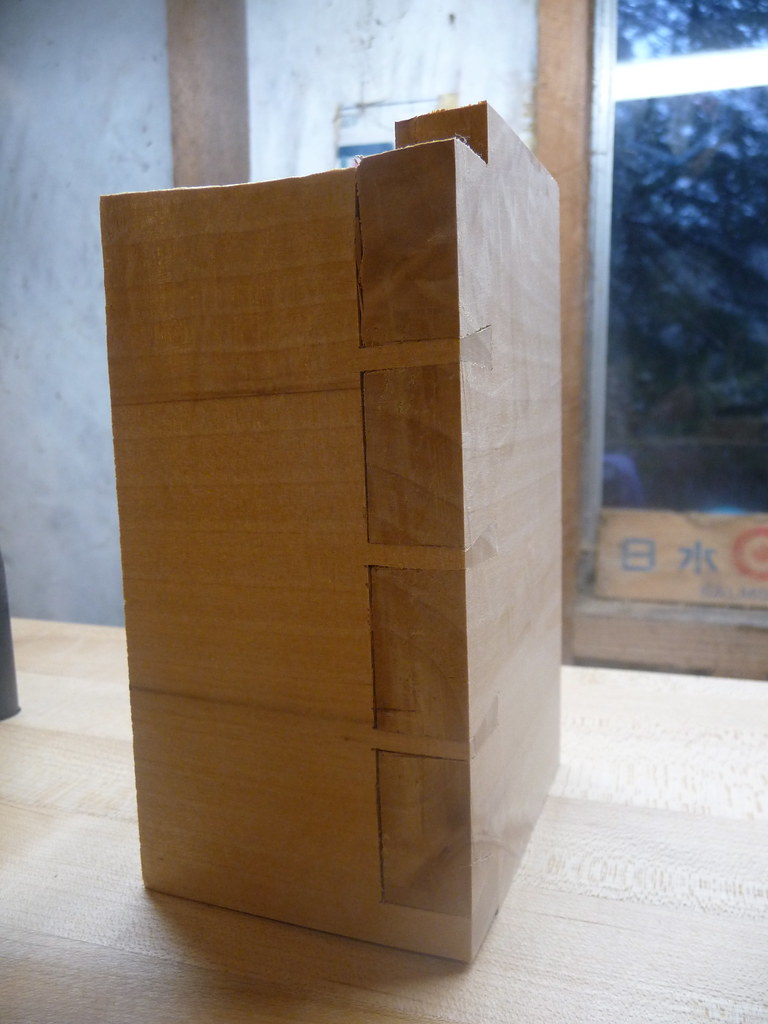Today's joint came out better, but had a tragic flaw: one of the half-tails broke off during assembly. A good lesson.
I used a coping saw to remove most of the socket waste this time. Much faster, as expected. I also carefully sharpened all of the bench chisels, which didn't seem to need it, but of course worked much better after this process.
I'll do at least one more using this same alder board (still getting a feel for its chippy nature) but then probably switch to some other types of wood. This joint took less than half the time of the first one, and has a much tighter, though still flawed, fit. Learning lots and having fun!
Sockets after clearing waste with the coping saw
The curved hump on the top is where the half-tail popped off. In a real piece, it could be glued.



Looking really good. Practice makes perfect, as they say. I noticed you marked the outside face on the tail board, very smart. I've been stung by that bee before! Nothing wrecks a dovetail joint like trying to smash the pieces together backwards! :-)
ReplyDeleteI really like alder myself. Sure, it's got its drawbacks, but compared to poplar or pine, it works pretty well when dovetailing. I am in the middle of a poplar tool chest (the Anarchists's design) and chose poplar and wish I would have used alder. It would have been overkill, but it would have been a beautiful chest with just some BLO and shellac.
Looking forward to your next update. Just know that there are many people out here practicing just like yourself to tidy up those dovetails.
Those are better than you think. I've seen many antiques with joints worse than those. Start making furniture they will improve faster when it counts.
ReplyDeleteRich - even though I marked the outside of both boards, I still cut the tails opposite of how I meant to!
ReplyDeleteI am very keen on using alder since it grows all over here. Jim Tolpin calls it "poor man's cherry" which is fine with me. In these parts we have all the douglas fir and alder you can shake an axe at, but hardly any cherry, walnut, etc.
Millcrek- I have started to notice that! We have a beautiful antique dresser from Switzerland, the front is carved beautifully and overall it looks very fine. The dovetails visible on the sides of the drawers are pretty sloppy though!
I won't be posting all of the upcoming practice ones, at least not at once. I do agree that making them in context is a great way to improve, but I want the extra practice in addition to using them in "the real thing" primarily because I am trying to learn via the Joiner and Cabinet Maker, and Thomas the apprentice had to show his master sucessful practice joints before he was allowed to build his first School Box for a customer.
Something I picked up (but have yet to put into practice) about sharpening at the last class I took in Port Townsend...
ReplyDeleteHoning before and after you work will assure you almost never have to sharpen.
Basically whatever your highest grit level on your sharpening method (for me it's a Hard Translucent Arkansas stone, but whatever your final step is on your system is fine) you should take a couple swipes at with your tool before you start work, and before you put your tools away for the night.
So it never gets fully dull enough to need the lower levels of sharpening (for me, the india stone).
I want to set up a sharpening station so all I have to do is uncap my oilstones and go for it, rather than fumbling with a box in a drawer, finding space, etc.
We'll see if I actually put that into practice.
Looks great, Rob. It has been wonderful watching you grow and learn here at The Joiner's Apprentice. Thanks for sharing your journey with us. I will continue reading as I anticipate great things from you. Be well.
ReplyDeleteThanks for stopping by, Joshua. Its been a lot of fun and the best is yet to come!
ReplyDelete